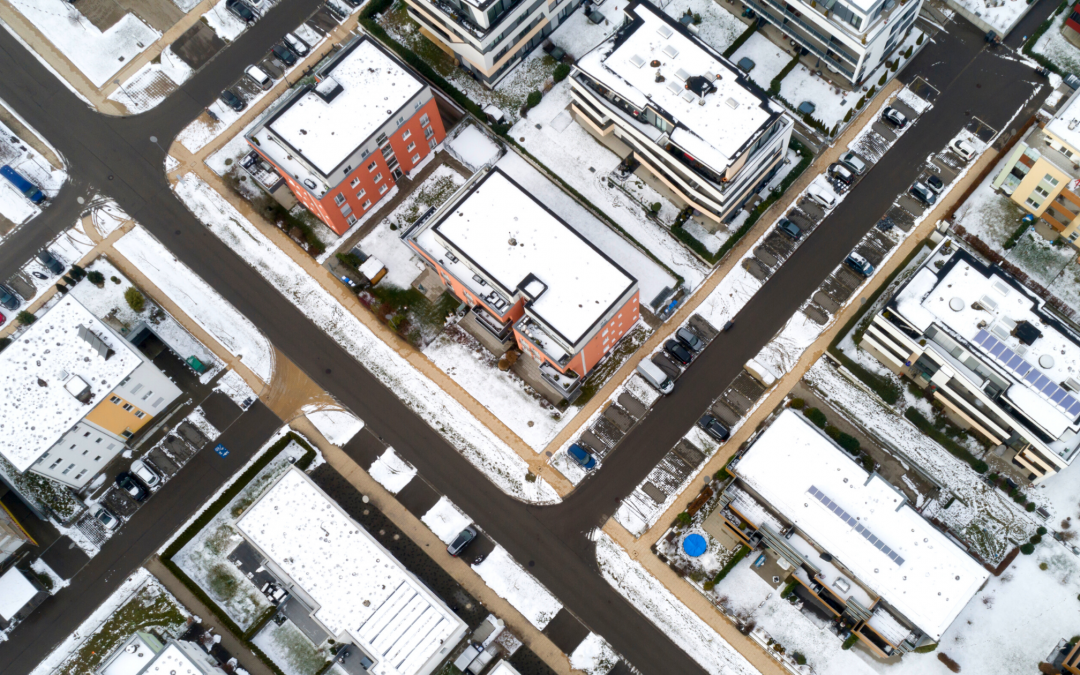WHEN THINKING OF WINTER CONDITIONS, WE TEND TO FOCUS ON THE HARSH WEATHER OUTSIDE.
Icy sidewalks and difficult roads, dressing with the windchill in mind. Canadians are well-versed in winter and how to manage the challenges of life in a cold climate.
Yet the risk that winter presents to infrastructure is often overlooked. The most frequent reminder that we must protect buildings and be mindful of freezing temperatures comes in the form of burst pipes. Unfortunately, by the time property owners discover a leaking pipe, a lot of water damage can have occurred.
Which pipes are the most likely to freeze?
It doesn’t matter whether a building is newly constructed or was built several decades ago, there are commonly vulnerable locations for pipes on most properties. The most likely pipes to freeze include:
- Pipes running against exterior walls with minimal insulation
- Pipes in unheated parts of a building, such as crawl spaces, basements, or garages
- Pipes exposed to severe outdoor temperatures, such as water sprinklers, pool supply lines and hose bibs
Preventing freezing pipes and catching leaks quickly
Winter preparations for business owners and property managers should always include an inspection of vulnerable pipes. Check that hoses and outdoor supply lines are drained. Consider installing insulation around pipes when possible.
Even after winterizing a building, water leaks are common. It often isn’t possible to visually inspect every area of concern on a frequent enough schedule to catch small problems before they get bigger. Luckily, it is possible to detect a burst pipe and other plumbing issues using water flow monitoring. Water flow monitoring technology provides an affordable method for detecting leaks and managing water usage throughout a property.
Water Flow Monitoring catches slow leaks too
Constant slow leaks from running taps and toilets can also cost a lot of money over time. Many property owners may view their monthly utility bills as an uncontrollable cost. However we have found that every customer who has tried this new service since its launch 5 months ago, has discovered ways to reduce their water costs. During a recent trial of our water flow monitoring system, we identified water leakage at one property that amounted to over $16,000 annually.
How does water flow monitoring work?
Our Water Flow Monitor is placed on a water meter and tracks water flow up to the minute by passively receiving mechanical signals sent from the water meter. Within minutes of installation, water flow is being monitored and usage data is collected. Over a period of a few weeks, the accumulated water usage data creates a real-time snapshot of how much water is being used in a building.
As the system builds a profile of regular water usage within a property, it can be set to trigger an alarm if usage goes above a certain threshold. This alarm is sent to our Emergency Monitoring Centre, where trained personnel immediately contact property managers to notify them of the issue. If a pipe bursts due to freezing temperatures, even after business hours or over a holiday when no one is onsite, water flow monitoring enables a quick response to help reduce the costly impacts of water damage.
Additional wireless flood and humidity sensors can be placed near hot water tanks, washing machines, and other areas of concern. Once water touches the two metal leads on the bottom of a flood sensor, an alarm is received by our monitoring centre. The humidity sensor will alert our emergency operators if humidity levels rise or fall outside of a pre-set range. The flood and humidity sensors include built-in temperature monitoring, which can also be calibrated to notify our monitoring centre if temperatures rise or fall outside of a pre-set range.
Powerful data at your fingertips
Water flow monitoring helps property owners save money over time. Water usage reports are accessed through a secure web portal. The system provides comprehensive data that can help property owners who need to reduce water or energy usage and save money. Web portal tools include the ability to compare multiple properties. All data is presented through visual graphs and detailed reports to help focus on and resolve issues.
Don’t let freezing winter pipes and slow leaks in your building cost you more. Contact us to learn more about how water flow monitoring can help protect your property this winter.

